Five easy weeknight dinners
’Tis the season... for spicy prawn and tomato stew, chicken noodle soup with a secret, creamy, leftover herb pasta, and more, says Emily Weinstein
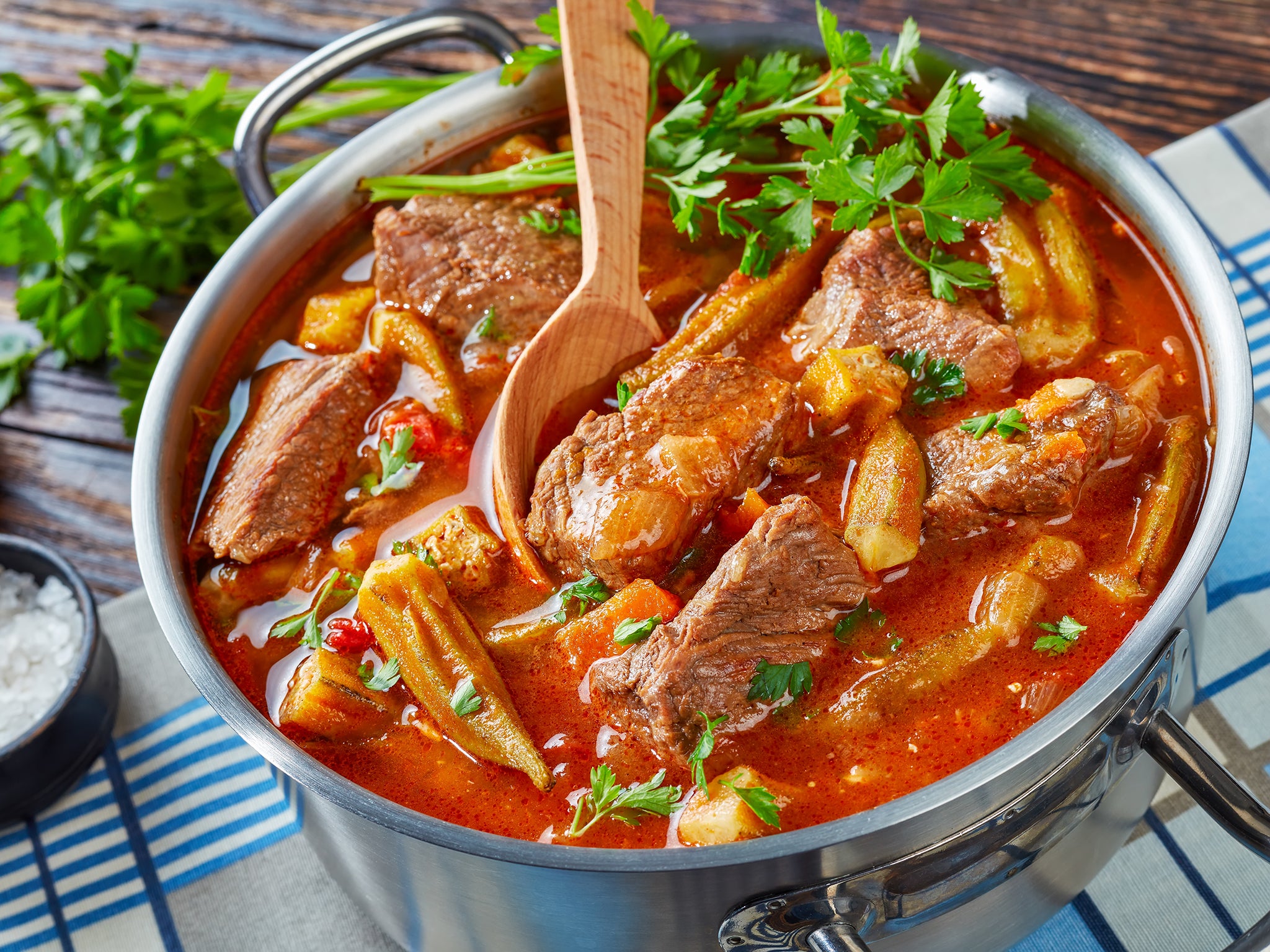
Your support helps us to tell the story
From reproductive rights to climate change to Big Tech, The Independent is on the ground when the story is developing. Whether it's investigating the financials of Elon Musk's pro-Trump PAC or producing our latest documentary, 'The A Word', which shines a light on the American women fighting for reproductive rights, we know how important it is to parse out the facts from the messaging.
At such a critical moment in US history, we need reporters on the ground. Your donation allows us to keep sending journalists to speak to both sides of the story.
The Independent is trusted by Americans across the entire political spectrum. And unlike many other quality news outlets, we choose not to lock Americans out of our reporting and analysis with paywalls. We believe quality journalism should be available to everyone, paid for by those who can afford it.
Your support makes all the difference.We are running headlong into Thanksgiving, Friendsgiving and – I can’t believe this – the holiday season. I’m ready for pie. I’m ready for latkes. I’m ready for cookies.
I’ve got weeknight recipes for you covered below, as always. Happy Thanksgiving to you.
Prawn Creole
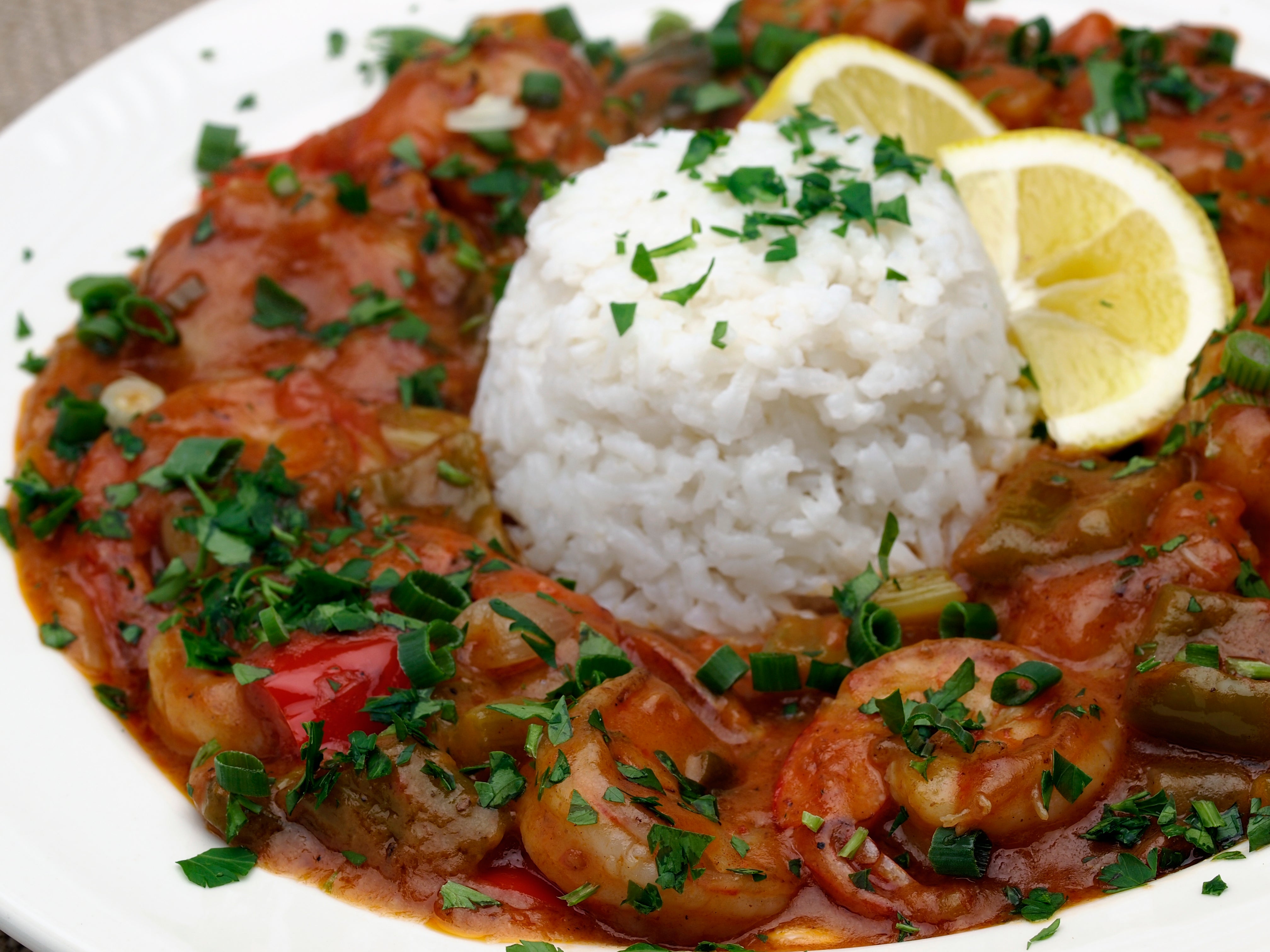
Much like gumbo, this prawn and tomato stew starts with a roux that thickens and adds a distinct flavour (though many takes on prawn Creole skip the roux altogether). Next, the “holy trinity” of Creole cooking – onion, celery and bell pepper – is simmered in the roux. You’ll want to stir the bottom of the pot constantly to prevent the roux from sticking and burning, and make sure to keep a close eye: a burned roux can’t be saved. Creole cuisine relishes improvisation, so feel free to add other veggies or a different protein, or omit the hot sauce and add a teaspoon of apple cider vinegar in its place. This spicy stew is traditionally served over steamed white rice, but is also delicious served over brown rice or other whole grains, like quinoa.
By: Vallery Lomas
Serves: 4
Total time: 50 minutes
Ingredients:
For the Creole seasoning (optional):
1 tbsp smoked paprika
1 tbsp chilli powder
1 tsp onion powder
1 tsp garlic powder
½ tsp cayenne pepper (or less, if desired)
½ tsp fine sea salt
½ tsp black pepper
For the prawns:
450g prawns, peeled and deveined
2 tsp homemade or store-bought Creole seasoning
60g unsalted butter (½ stick)
45g all-purpose flour
1 medium yellow onion, finely chopped
2 celery ribs, thinly sliced
1 green bell pepper, seeded and finely chopped
4 garlic cloves, minced
1 (425g) can tomato sauce (no salt added)
1 to 2 tsp hot sauce, to taste (optional)
1 tsp sugar
½ tsp dried thyme
½ tsp dried oregano
½ tsp dried basil
2 dried bay leaves
Fine sea salt and black pepper
25g chopped spring onions
Handful chopped flat-leaf parsley leaves and tender stems
Steamed rice, for serving
Method:
1. Make the optional Creole seasoning: combine all ingredients in a small bowl and stir together. The seasoning makes about ¼ cup; store it in a closed container in a cool, dry place.
2. Toss the raw prawns with 1 teaspoon Creole seasoning and set aside.
3. In a casserole dish or large, heavy frying pan, melt the butter over medium-low heat. Sprinkle the flour on top and stir constantly with a wooden spoon until a roux the color of peanut butter forms, about 10 minutes.
4. Add the onion, celery and bell pepper, increase the heat to medium and cook until softened, stirring occasionally, about 8 minutes. Stir in the garlic and cook until fragrant, 1 minute.
5. Stir in 80ml water, then the tomato sauce, hot sauce (if using), sugar, thyme, oregano, basil, bay leaves, 1½ teaspoons salt, ½ teaspoon black pepper and the remaining 1 teaspoon Creole seasoning. Bring to a simmer, then reduce the heat to low. Cover and simmer for 10 minutes until thickened, stirring occasionally to make sure that the bottom doesn’t burn (if needed, add more water).
6. Once the stew has thickened, add the seasoned prawn and simmer until opaque and cooked through, about 5 minutes, turning each piece halfway through the cooking time. Taste and adjust seasoning.
7. Remove from the heat and let stand for 10 minutes, uncovered. Sprinkle with spring onions and parsley, and serve over steamed rice.
Easiest chicken noodle soup
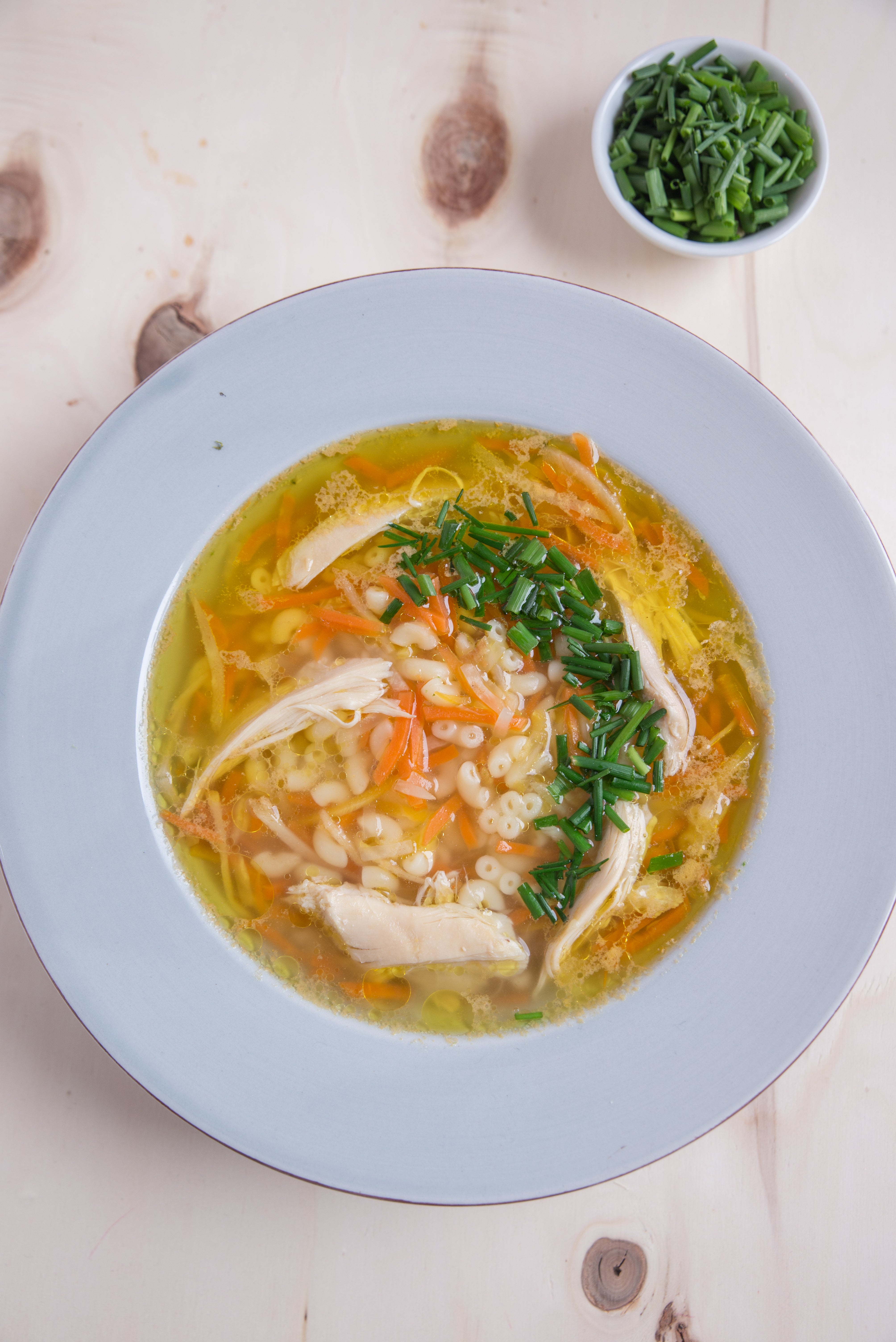
The majority of shortcut chicken soup recipes use rotisserie chicken. It’s a convenient hack, but cooked chicken doesn’t absorb flavours very well. On the other hand, sauteing chicken mince in olive oil with garlic, coriander and celery seeds (or fennel seeds and rosemary, or herbes de Provence) creates a deeply complex base. Add the vegetables, then the stock and the noodles for a complete meal that cooks in 30 minutes. You can use egg noodles, cavatelli or alphabet noodles, but you may want to adjust the amount of stock to taste, since they’ll each absorb a different amount of liquid.
By: Alexa Weibel
Serves: 4 to 6 servings
Total time: 30 minutes
Ingredients:
5 tbsp extra-virgin olive oil
450g chicken mince
Salt and freshly ground black pepper
4 garlic cloves, roughly chopped
1½ tsp ground coriander
½ tsp celery seeds (optional)
1 large carrot, peeled and cut into 1.5cm cubes
2 celery stalks, halved lengthwise, then sliced 1.5cm thick
1 large shallot, finely chopped
1 tbsp fresh thyme leaves (or 1 tsp dried thyme leaves)
1.7-1.9L chicken stock, plus more as needed
225g dried egg noodles, cavatelli or other small shaped pasta
Crème fraîche, chopped fresh parsley and dill, and lemon zest, for garnish
Method:
1. In a large pot, heat 3 tablespoons oil over medium-high. Add the chicken, season generously with salt and pepper, and cook, breaking up with a wooden spoon, until starting to crumble, about 3 minutes. Add the garlic, coriander and celery seeds (if using), and cook, stirring frequently, until chicken is cooked through, about 2 minutes. Using a slotted spoon, scoop the chicken into a small lidded bowl (to retain moisture); cover and set aside.
2. Add the carrot, celery, shallot, thyme and the remaining 2 tablespoons oil to the pot, season with salt and pepper, and cook, stirring, until slicked with fat, 3 minutes. Add the stock (1.7L for a stew-like soup or up to 1.9L for a brothy soup) and bring to a boil over high.
3. Add noodles and cook over medium-high until al dente according to package directions (if the noodles absorb a lot of liquid, add more broth according to taste). Add the reserved chicken and any accumulated juices and heat until warmed, then season to taste with salt and pepper. Divide among bowls; top with a spoonful of creme fraiche, a fistful of torn herbs and lemon zest.
Kimchi jigae with ribs
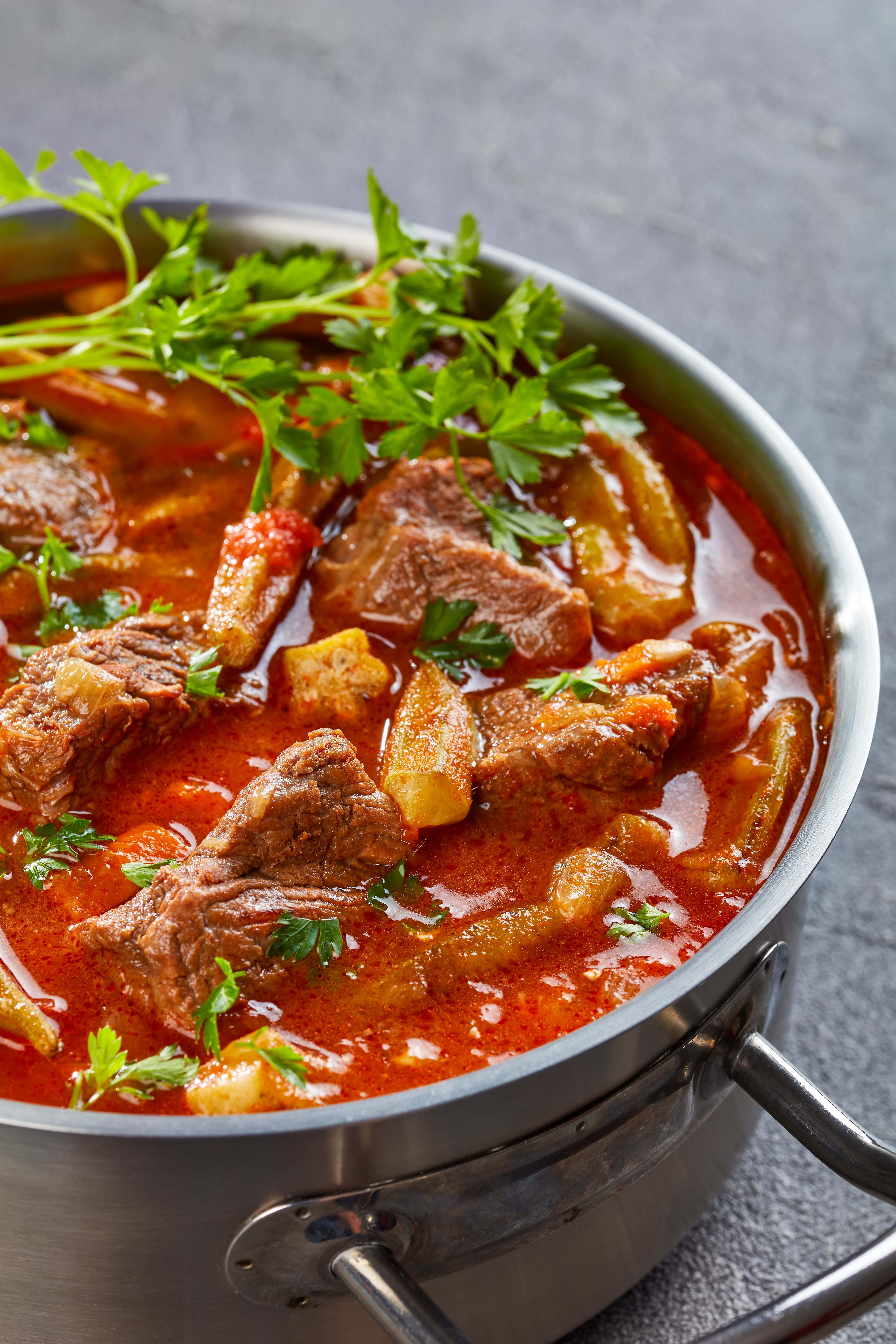
The world of bubbling jjigaes, or stews, is vast and varied. The most beloved might be kimchi jjigae, a pot of extra-fermented kimchi boiled in its own juices until mellowed and yielding. Pork belly, Spam and tofu are common protein additions, as are tuna and mackerel pike. In this version, baby back ribs lend both flavour and body to the broth and are fun to eat with your hands. In case your kimchi is less than ripe (it should taste sharp and funky), a couple of seasonings help fortify this jjigae’s flavour: fish sauce adds savoury depth, and maesil cheong (green plum syrup) lends rounded sweetness. And though watercress is not a traditional ingredient in kimchi jjigae, it is a favourite addition to this family recipe.
By: Eric Kim
Serves: 4 servings
Total time: 45 minutes
Ingredients:
1 rack baby back ribs (about 680g), sliced into individual ribs
1 (7.5cm) piece ginger, scrubbed and cut into 1.5cm slices
1 tbsp unsalted butter
1 tbsp gochugaru (see tips), plus more to taste
4 large garlic cloves, minced
450g coarsely chopped ripe kimchi, plus any accumulated juices
Salt
1 medium yellow onion, halved and cut into 0.5cm slices
1 tbsp fish sauce, plus more to taste
1 tbsp maesil cheong (green plum syrup; see tips), plus more to taste
Handful watercress, leaves and tender stems, for serving (from 1 small bunch; optional)
Cooked white rice, for serving
Method:
1. Place the ribs and ginger in a large casserole dish or other heavy-bottomed pot and cover with cold tap water. Bring to a boil over high heat and cook the ribs until they are no longer pink and grey foam collects at the surface, about 5 minutes. Drain the ribs in a colander and rinse under cold tap water. Discard the ginger. Rinse the pot out if it is especially dirty; place the empty pot back on the stove.
2. Melt the butter in the pot over low heat and add the gochugaru and garlic. Stir until aromatic, just a few seconds, watching carefully to avoid burning the gochugaru or garlic. Add the kimchi and 2 cups of water and stir to combine. Nestle in the cleaned ribs in a single layer and season the cooking liquid generously with salt. Bring to a boil over high heat, then reduce the heat to medium-low. Cover the pot and gently boil until the kimchi starts to soften, 5 to 7 minutes.
3. Add the onion slices in a single layer over the ribs, tamping them down slightly to dampen them in the porky kimchi juices. Cover the pot again and continue gently boiling until the ribs are cooked through and the onions have released their juices and thinned out the broth slightly, 10 to 15 minutes. These ribs should tear off the bone easily but remain juicy and chewy; they aren’t meant to be fall-apart tender.
4. Turn off the heat and stir in the fish sauce and maesil cheong, adding more to taste. Season with a final pinch of gochugaru and salt if desired. Top the stew with the watercress, if using, and let it wilt slightly in the residual heat. Serve the pot of kimchi jjigae in the center of the table, family-style, with a ladle and bowls of fresh white rice and a plate for the bones.
Tips: Gochugaru, or red pepper powder, is available online, at Korean or Asian supermarkets and at most grocery stores. It sometimes comes in larger bags, which is not a problem because it keeps in the freezer beautifully. You can find maesil cheong, or green plum syrup (also labeled an extract), online or in Korean or Asian supermarkets. Add a splash to a mug of hot water and drink it as tea, or mix it into salad dressings, marinades and stews as an aromatic sweetener with a touch of tartness.
Pasta with creamy herb sauce
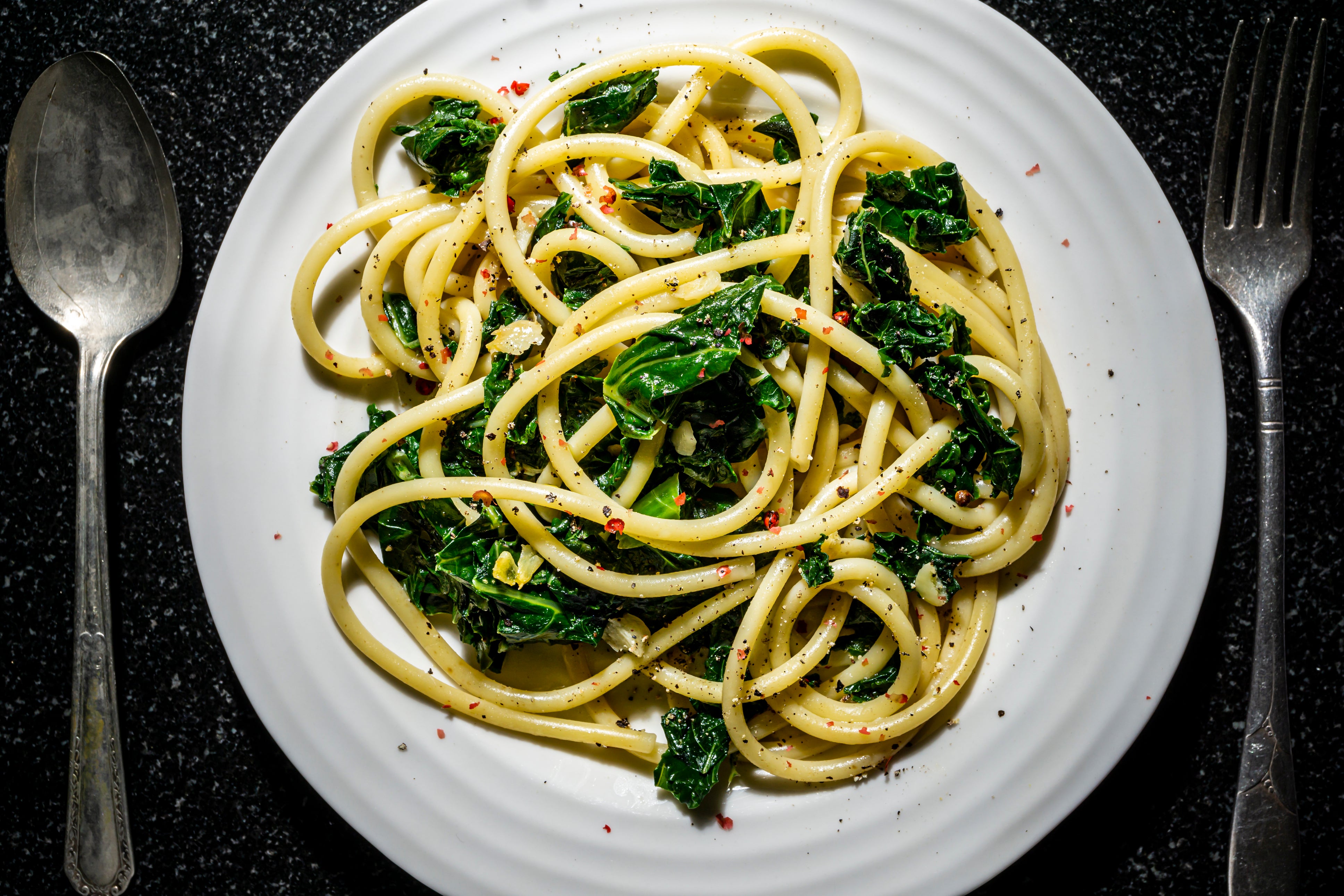
This cosy pasta is the perfect place to use up any hard-stem herbs like sage, thyme or rosemary that are languishing in your fridge. Add the herbs and a cinnamon stick to a pot of heavy cream. As they bubble together, the cream takes on a surprising but subtle herbaceousness. Use it to sauce pasta noodles and winter greens. If you don’t have the herbs listed, leave them out or swap in marjoram or bay leaves, or even dried chilli, lemon peel, garlic, shallot or leeks. The method of infusing cream with flavourings, then using it to sauce pasta, is open to adaptation.
By: Ali Slagle
Serves: 4
Total time: 30 minutes
Ingredients:
Salt
350ml heavy cream
3 sage leaves
3 sprigs thyme or oregano
1 small rosemary sprig
1 cinnamon stick (or a grating of nutmeg)
Black pepper
450g linguine, fettuccine or another long noodle
1 bunch dark leafy greens, such as kale, mustard greens, broccoli raab or mature spinach, stems removed and cut or torn into 5-7.5cm pieces
Method:
1. Bring a large pot of salted water to a boil. In a small saucepan, combine the heavy cream, sage, thyme, rosemary, cinnamon and a pinch of salt and pepper. Bring to a simmer over medium and cook until the cream has thickened slightly and is reduced to about 1 cup, 12 to 15 minutes, adjusting the heat as needed to maintain a gentle simmer. Remove from heat until the pasta’s ready.
2. When the cream is at the halfway point, add the pasta to the boiling water and cook until a minute or 2 shy of al dente. About 3 minutes before draining the pasta, add the greens to the water. Reserve cup pasta water, then drain the pasta and greens with a colander and return to the pot.
3. Place the just-used colander over the pot of pasta, then strain the infused cream through the colander into the noodles (discard or compost the herbs and cinnamon stick). Add the ½ cup pasta water to the pasta, set over medium-high heat, and cook, tossing, until the sauce glosses the noodles, 3 to 4 minutes. Season to taste with salt and pepper.
Hot and sour seared tofu with snap peas
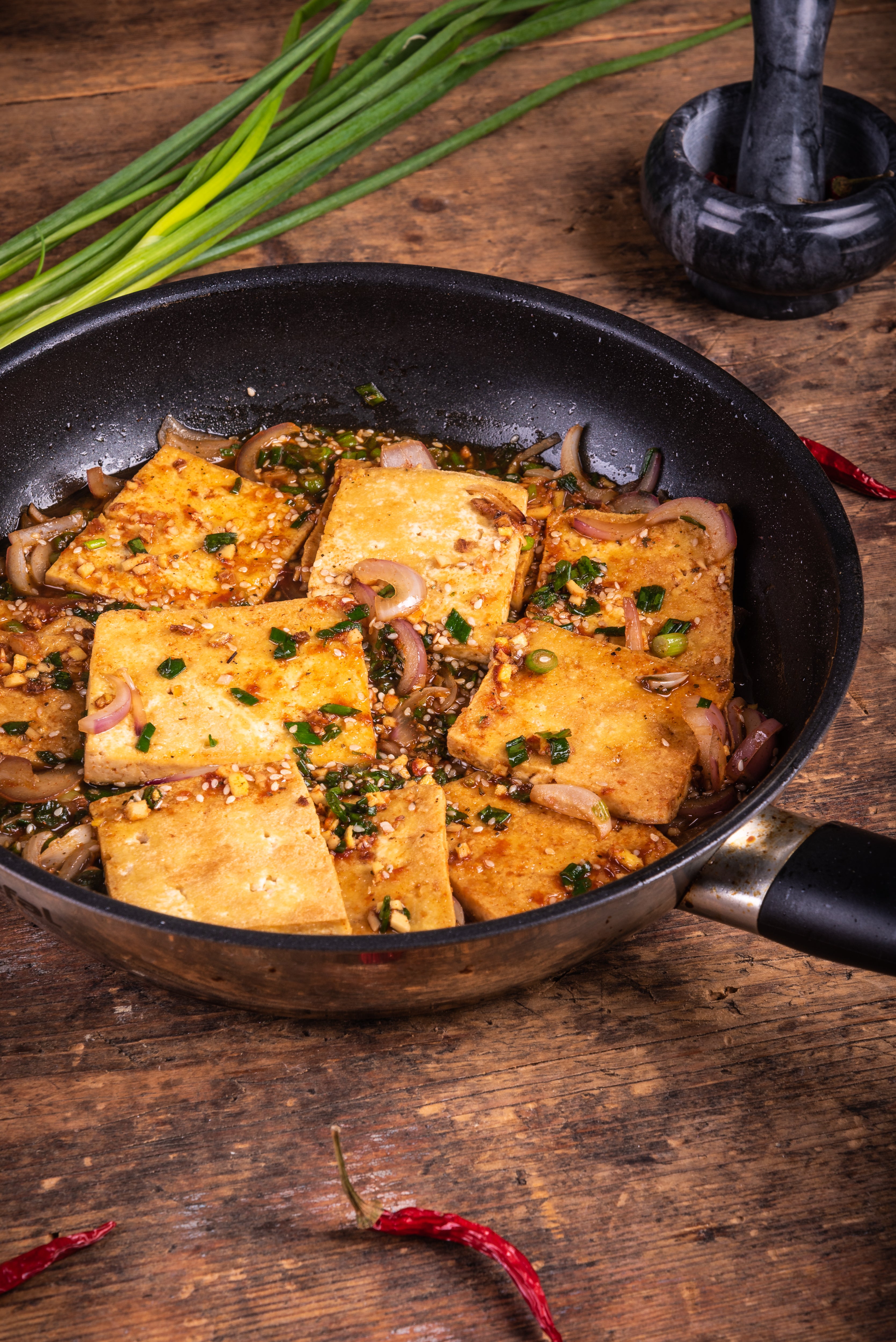
Impatience was the main reason I failed at searing tofu. For years, I had given in to the temptation to poke it, turn it, examine it, annoy it. Then I finally learned that, like any very moist ingredient (fish, mushrooms, tomatoes), the less you bother it, the browner and crisper it will get. Once I figured that out, searing tofu was easy. These days it’s a fixture in our something-quick-for-dinner arsenal. In this recipe, I stir-fry it with sliced sugar snap peas. But any vegetable cut into small pieces (asparagus, mushrooms, broccoli, courgette, green beans) works well, too.
By: Melissa Clark
Serves: 2 to 3
Total time: 20 minutes
Ingredients:
1 (400g) package extra-firm tofu
4 large garlic cloves, grated
2 small jalapeno chillies, seeds and veins removed if desired, thinly sliced
1½ tbsp soy sauce
1½ tsp grated ginger root
1½ tbsp fresh lime juice, more to taste
1½ tsp toasted sesame oil, more for drizzling
1½ tsp fish sauce
1 tsp honey
2 tbsp peanut oil, more if needed
170g sugar snap peas, trimmed and thinly sliced
3 spring onions, thinly sliced
Sesame seeds, for serving
Cooked rice, for serving
Chopped coriander or basil, for serving
Method:
1. Drain tofu, wrap it with a clean dish towel or several layers of paper towels and place on a rimmed plate; top with another plate and a weight (a can works). Let drain further.
2. Meanwhile, make the sauce: in a small bowl, combine garlic, chillies, soy sauce, ginger, lime juice, sesame oil, fish sauce and honey.
3. Unwrap tofu and cut crosswise into 2cm-thick slices. Pat slices dry.
4. Heat a large frying pan over high heat until very hot, about 5 minutes. Add peanut oil and let heat for 30 seconds, then carefully add tofu. Don’t touch tofu for 2 to 3 minutes, letting it sear until golden brown. Flip and sear for another 2 to 3 minutes. Move tofu to one side of pan (or stack pieces on top of one another to make room in pan), then add sugar snap peas, spring onions and, if needed, a few drops more peanut oil. Stir-fry vegetables until they start to soften, 1 to 2 minutes. Add sauce and stir well, cooking until peas are done to taste, another minute or two. Spoon sauce all over tofu, unstacking it if necessary.
5. Sprinkle sesame seeds over tofu and vegetables and serve over rice, sprinkled with cilantro or basil.
© The New York Times
Join our commenting forum
Join thought-provoking conversations, follow other Independent readers and see their replies
Comments